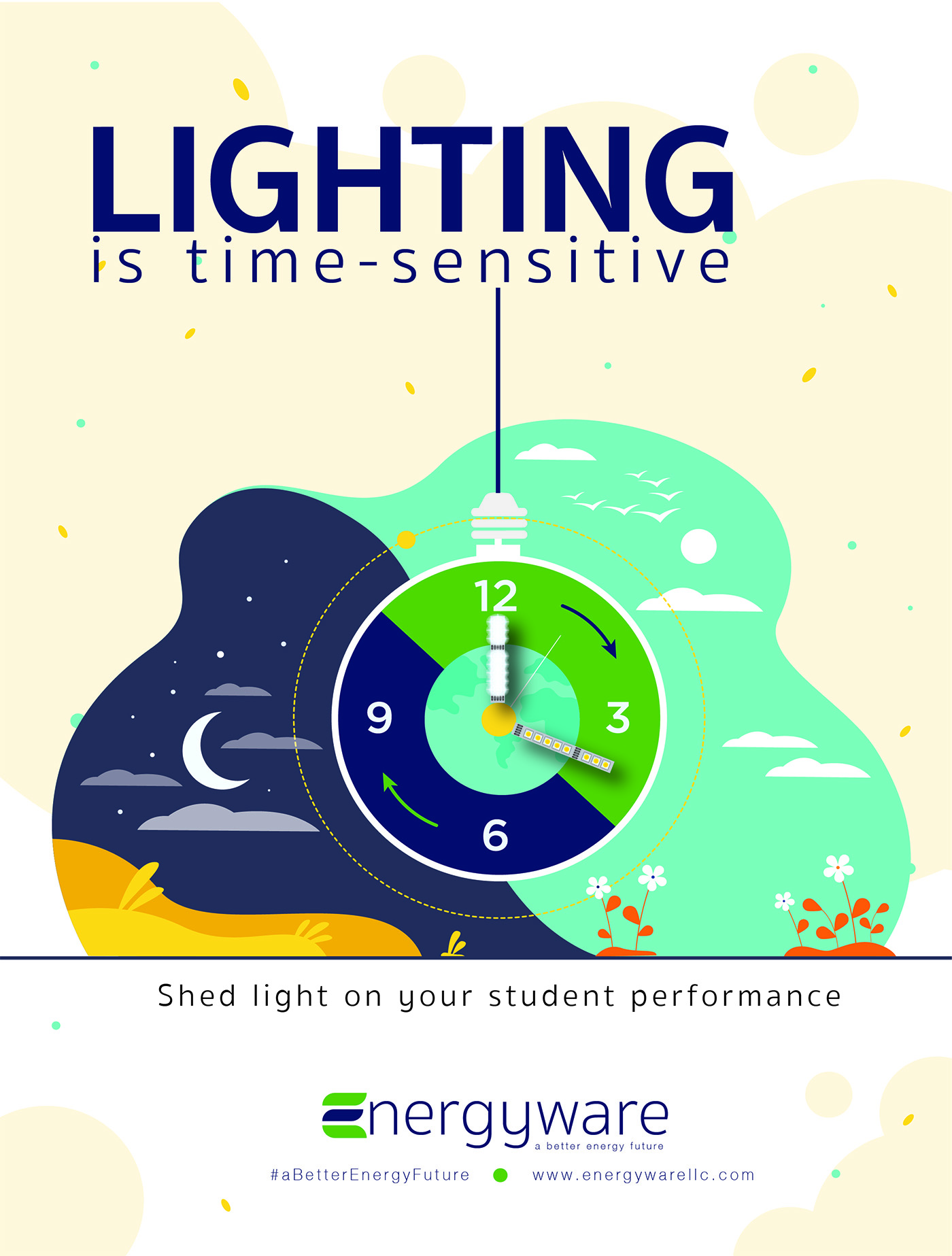Article originally published in the May 2021 edition of AASA School Administrator magazine
The impact LED lighting brings to a classroom can make a significant difference in student’s ability to learn (and the lack of poor lighting also has a negative impact), said Jake Jacques, CEO of energyware, a national provider of energy efficiency technology.
“Recent studies have been able to make direct correlations between quality LED lighting and improvements in a multitude of key performance indicators in schools. Students are simply in a better position to learn, process information and apply said information practically when they learn in an environment that is illuminated by LED lights.”
Poor lighting can be detrimental to student success, as glare or flickering associated with legacy lighting can cause visual discomfort, resulting in headaches, eyestrain and negative behavior. With quality LED lighting installed in schools, students no longer have to strain to see the study material, making it easier to concentrate and navigate the hallways. LED technology has been proven to achieve consistent lighting performance compared to alternative options, making it the industry standard for student success.
Improving student concentration has become a focal point for thousands of administrators across the country, especially as the understanding of ADHD and other studying-related medical issues continues to grow. LED lighting has been proven to help students build their concentration abilities during classes. It has been shown to help them focus more effectively on their work in the classroom as their memory recall and information comprehension skills are able to develop more effectively under quality lighting.
When a learning environment uses LED technology, teachers gain the flexibility to control the color temperature and dimming capabilities to create optimal learning environments. This flexibility is key, as teachers can gauge which settings are needed based on the activities planned for class that day.
Perhaps the most surprising finding comes from a recent study that showed that lighting with the ability to simulate day-lighting can increase cognitive performance in students and help with adjustments in their circadian rhythms. A circadian rhythm is like an internal clock; it plays a huge role in student performance. When a student’s circadian rhythm is exposed to LED lights instead of fluorescent and/ or incandescent lights, they have a better opportunity to be more alert of their surroundings, focus on key objectives, and perform in the classroom.
This extremely noteworthy benefit is backed by a rapidly growing body of evidence that links a significant reduction of the impact that LEDs have on the circadian rhythm. A circadian rhythm, when exposed to LED lights instead of fluorescent and/or incandescent, can assist with one’s ability to focus and perform in the classroom. This is a major finding, as overexposure to poor lighting has been tied to negative consequences for circadian rhythms, resulting in damaging effects for sleep/wake cycles.
The benefits of LED lighting go beyond big savings. Providing lighting that supports the various needs within a classroom continues to be a major factor in student behavior and performance. To learn more about LED lighting and its influence on student success, please contact us here.













